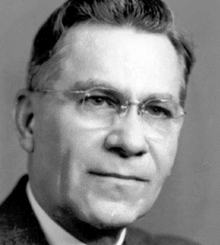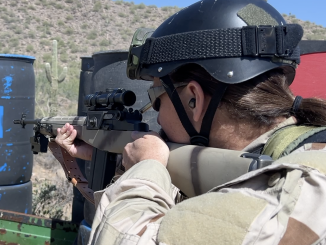In the early 1970s, Colt wanted to develop a new military pistol so that it could offer a modern replacement for the venerable 1911. Colt Engineer Robert Roy designed the new gun in 1971, and was granted patents on it in 1972. It was made entirely of stainless steel, had a 15 round capacity (in 9mm; 12 rounds of .45 ACP in that version), and a DA/SA trigger along with a manual safety mounted on the slide. In fact, the gun shares many elements with Charles Petter’s pistols, the French 1935A and the SIG 44/16 family (which became the SIG P210). It has full length frame rails, and a modular removable fire control mechanism, along with a barrel ramp to lock and unlock in place of Browning’s swinging link.
The Colt 1971 prototypes became the Colt SSP (Stainless Steel Pistol), and were entered in the US military XM9 trials in the 1980s, where it ultimately lost to the Beretta 92. The SSP (and the 1971, for that matter) was never offered on the commercial market, although it certainly would have had potential there in the 1970s.




If my historical reading is correct, Tokarev’s removable hammer-sear-mainspring group predated both Petter’s (if he in fact designed the French pistol, as opposed to having his patents utilized) and SIG’s. The slide nestled within the frame rails traces its origin to non-slide pistols such as Borchardt, Luger, and Lahti, but it seems true that Petter and then SIG, adapted this idea to the Browning encompassing slide.
The elephant in the room here is the S & W 59, double-stack, 9-mm, double-action, identical controls to this gun except for a hammer-drop safety, and doing good sales to various police departments in the U.S. Also an entrant to the US military trials. Isn’t it true that Beretta lost to SIG-Sauer on quality but in the end won on price?
Pretty much, as SIG-Sauer has a very high price tag per gun. Great performance but high production costs…
No longer, it would seem…..
Both the M9 and the Sig met the requirements equally, Beretta’s maintenance and parts package was cheaper.
And cheaper means more bulk delivery for your money’s worth!
The S&W M59 had its beginning as the U.S. Navy MK 22 Mod 1 “Hush Puppy” suppressed 9mm pistol.
The MK 22 Mod 0 was a Model 39 with an extended, threaded barrel and a slide lock, both for optimum noise suppression with subsonic 9mm ammunition.
The Mod 1 was developed due to a Navy request for the same or equivalent pistol with greater magazine capacity; sometimes it took three or four subsonic 9mm rounds to dispose of a single guard dog or etc.
The characteristic Third Generation adjustable rear sight in the steel “box” atop the slide was also a feature of the Mod 1.
This pistol was developed in 1969 and issued to Navy SEAL teams late that year, two years before the Model 59 was introduced to the U.S. civilian market.
Incidentally, no domestic pistol had a chance of being adopted in the JSSAP program. Congressional elements were determined that the new service pistol be an import, to make it possible to get rid of the domestic handgun industry.
They later gave the contract for the M16A2 rifle for the Defense Department to FN in Belgium for similar reasons. They had to rescind that contract when FN, after three years, did not manage to produce a single usable rifle.
cheers
eon
“no domestic pistol had a chance of being adopted in the JSSAP program. Congressional elements were determined that the new service pistol be an import”
Wait, what?! Reversed Not-Invented-Here syndrome? I never heard before about any competition for new general purpose (all armed forces) competition for new default automatic pistol with “being foreign-made” requirement, when such weapons were available from domestic industry.
Considering that, now I would NOT be surprised if when U.S. force were adopting new automatic pistol, someone will say ok, now roll dice.
Probably this was Congressional revenge for all the shenanigans pulled by Army Ordnance, especially if we count the alleged rigging of private sector competitors’ rifles to explode during trials through means of sabotaged ammunition and/or missing receiver components replaced with fakes while competitor representatives weren’t looking…
As I understand, the prints Colt sent to FN were so jacked up as to be useless. As far as demanding a foreign made handgun? When Beretta was chosen, much autistic screeching was heard from certain Congressmen whose districts contained gun-makers.
Ok. I’ll take the bait. Do tell us about this plan to destroy
the US handgun industry. And why it failed…..
Let’s take Robert’s comment above. If, as he said, several members of Congress protested against foreign contracts because domestic contracts were to benefit the Congressmen’s districts, then the motive is clear. The point was not complete destruction of the domestic handgun industry but to prevent “money under the table” from happening. Domestic contracts meant someone in government could exert influence on the contract and get rich if the contracted gun-makers lived in his district (“more guns bought by the army from MY district=more tax money and profits for my pockets”). Foreign gun makers could NOT make private deals under the table with American Congressmen because of the Emoluments Clause of the Constitution as stated below:
“No Title of Nobility shall be granted by the United States: And no Person holding any Office of Profit or Trust under them, shall, without the Consent of the Congress, accept of any present, Emolument, Office, or Title, of any kind whatever, from any King, Prince, or foreign State.”
It’s almost easy to side-step the issue if the person/firm giving the gifts happens to be American.
Yes, I’m likely wrong.
Strange… I had an arms room full of those “unusable” FN M16A2 rifles, and all of them were superior to the Colt version in every way. The one I issued myself was quite possibly the most accurate 5.56mm rifle I ever fired, with the possible exception of my Valmet M76…
I concur with your assessment Kirk. The FN ‘A2 shot better in my experience as well.
Wouldn’t the winning firm be forced setting up production within the US?
Wouldn’t that actually increase the overall volume of firearms produced within the country, along with transfer of technology/expertise?
And finally, woulnd’t it also break the unions, and force better q/c, so lacking in those troubled years for the industry?
Notable features of Maused C96, like; Caliber, removable lockwork housing, bolt group nestled within the receier and non screw parts fastening were shared by Tokarev, Petters and later SIG… Though Petters pistol did not use slide in the frame future, SIG used it with addition of kidney shaped locking cam slot with its own patent.
Colt’s pistol configuration seems resembling very much of Star M28 of that era which gained usage not comparable with that handgun.
“Caliber”
If understand as inner diameter of barrel yes, however cartridge varied. Anyway cartridge was not choice of designers of that particular automatic pistol, as it was given.
I have enjoyed you’re video’s Ian. I have just started a TV show The Deplorable General and Tactful Tactical Academy we just started these companies.
‘…defined and synthesized system parameters.’
Any project couched in language like that is doomed.
This reminded me about dihydrogen monoxide. Beware that substance! It caused many deaths: https://en.wikipedia.org/wiki/Dihydrogen_monoxide_hoax
I saw that coming. Fancy language usually gives the impression of great intelligence but any good scientist would try to use simple terms to avoid miscommunication with potential audiences, especially if concepts must be proven!
Eschew obfuscation.
I wonder if this had any influence on the later Para-Ordinance pistols